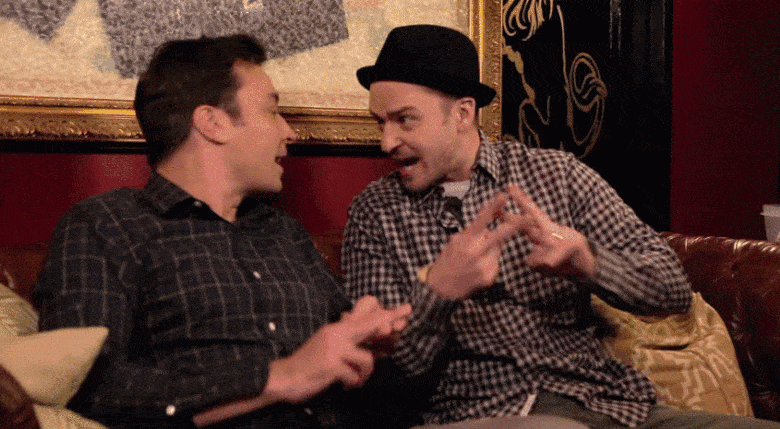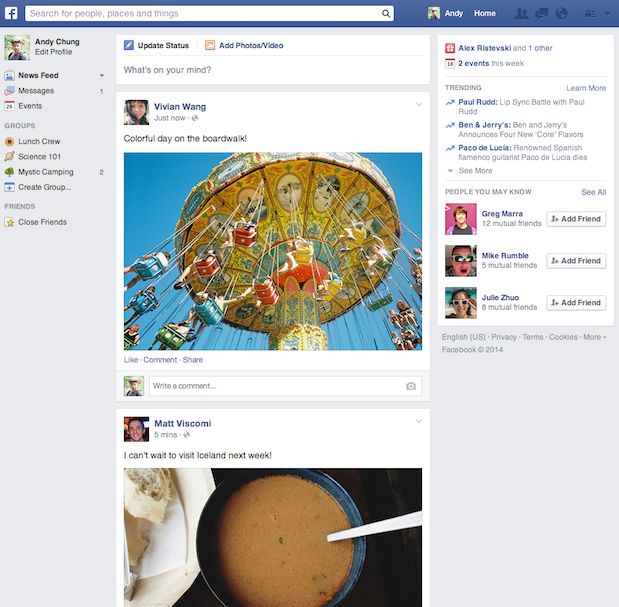On March 6, 2019, Facebook CEO Mark Zuckerberg published a lengthy note about the importance of privacy on Facebook’s properties, acknowledging that the social network’s track record on privacy has been less than stellar, and outlining a new “privacy-focused vision” for the future. “…we’ve historically focused on tools for more open sharing,” he explained in the post. “But we’ve repeatedly shown that we can evolve to build the services that people really want, including in private messages and stories.” Facebook intends to create a new privacy-oriented platform based on several principles that the brand will commit to in the coming years. For advertisers, the most important of these are:
Private interactions
Encryption and safety
Reducing permanence
PRIVATE INTERACTIONS
According to data from the Pew Research Center, 54 percent of Facebook users over 18 have adjusted their privacy settings in the last year, triggered by revelations about how Cambridge Analytica was able to collect data without user knowledge or consent. Since then, social engagement has evolved, given that privacy is of paramount importance to users and under the microscope in the media. And Facebook has taken note. Zuckerberg writes in his note:
Today we already see that private messaging, ephemeral stories, and small groups are by far the fastest growing areas of online communication. And there are a number of reasons for this. Many people prefer the intimacy of communicating one-on-one or with just a few friends. People are more cautious of having a permanent record of what they’ve shared. And we all expect to be able to do things like payments privately and securely.
On Facebook, this will fundamentally change the way in which users interact with one another, providing more ways for users to interact privately or semi-privately in small groups, instead of publicly. Social listening has long been a challenge on Facebook, given users’ ability to establish and customize their privacy settings. With more opportunities for users to communicate privately, brands should expect to have even fewer ways to listen in on what’s being discussed on Facebook and its other properties. On the flip side, if Facebook users will be connecting privately, outside the traditional News Feed, new ad units and placements are sure, according to The Verge’s Casey Newton, to follow to help brands reach users within those private interactions.
ENCRYPTION AND SECURITY
Encryption is the primary focus of Facebook’s commitment to this “privacy-focused vision” for the future. In the same note, Zuckerberg explains:
People expect their private communications to be secure and to only be seen by the people they’ve sent them to… There is growing awareness that the more entities that have access to your data, the more vulnerabilities there are for someone to misuse it…And some people worry that our services could access their messages and use them for advertising or in other ways they don’t expect.
Over time, Facebook intends to implement full end-to-end encryption to limit its own ability (and the ability of others) to access user information in private messaging.
While encryption may be a priority for private communications, it appears that Facebook will be working to combat the “real safety concerns” on its platform, working to detect “patterns of [illegal] activity… even when we can’t see the content” of public posts. Shortly after Zuckerberg’s note was published, Facebook responded to Representative Adam Schiff’s request, committing to stopping the spread of misinformation around vaccines on its platform, reducing the reach of ads and posts that aim to spread “verifiable vaccine hoaxes,” removing the ability to target ads to users with interests in “vaccine controversies” and the like, and finding ways to share educational information on the topic.
Facebook does not have a clear timeline or path to implementing full end-to-end encryption at this stage, but brands can expect that the ability to target users based on their activities and interests will be limited when it fulfills this promise.
REDUCING DATA PERMENANCE
In the next phase of Facebook, its CEO envisions a world in which messages and posts (and their associated metadata) would expire or be archived automatically after a set period of time, as determined by the user, to encourage more (and more authentic) posting. “Stories already expire after 24 hours unless you archive them, and that gives people the comfort to share more naturally,” Zuckerberg explains. “This philosophy could be extended to all private content.” Focusing on ephemeral messaging represents a clear effort to get users to post and engage more often on Facebook properties – and there’s data to back that up. As of January 2019, more than 500 million are using Instagram Stories, which disappear after just 24 hours, every day. The greatest impact will likely be felt by advertisers as users potentially move to more ephemeral messaging. With posts and comments disappearing after a set period, brands may see target audience sizes decrease as interest and behavioral data gets removed or archived over time.
KEY TAKEAWAYS
While nothing has changed immediately, brands can anticipate changes coming to Facebook and its properties, including:
Even greater social listening challenges, as more private messaging will prevent brands from tracking relevant conversations on Facebook properties
Facebook emphasizing new ad units and placements to put branded content in the private messaging spaces where users are predicted to head next
Limitations on Facebook’s current robust targeting capabilities









 On an incredibly snowy December 10, I started my day with a little social media learning with a fellow LevLane-r, PR Account Manager Tracy Dabakis. Bundled up against the chilly precip, we trekked over to the Wharton School at the University of Pennsylvania to hit up the last sessions of the
On an incredibly snowy December 10, I started my day with a little social media learning with a fellow LevLane-r, PR Account Manager Tracy Dabakis. Bundled up against the chilly precip, we trekked over to the Wharton School at the University of Pennsylvania to hit up the last sessions of the 
